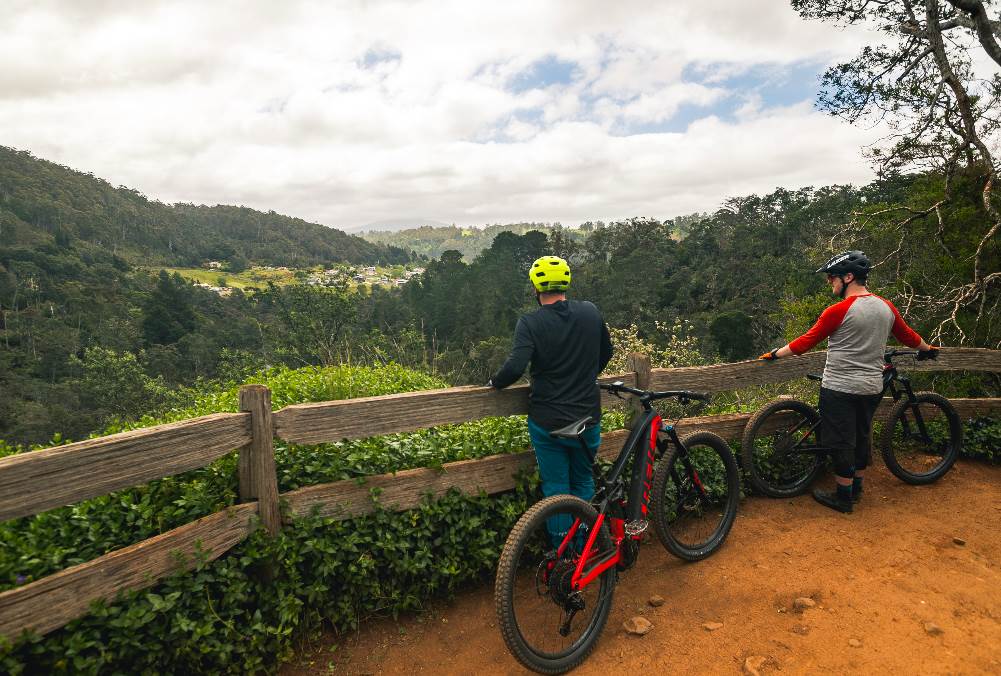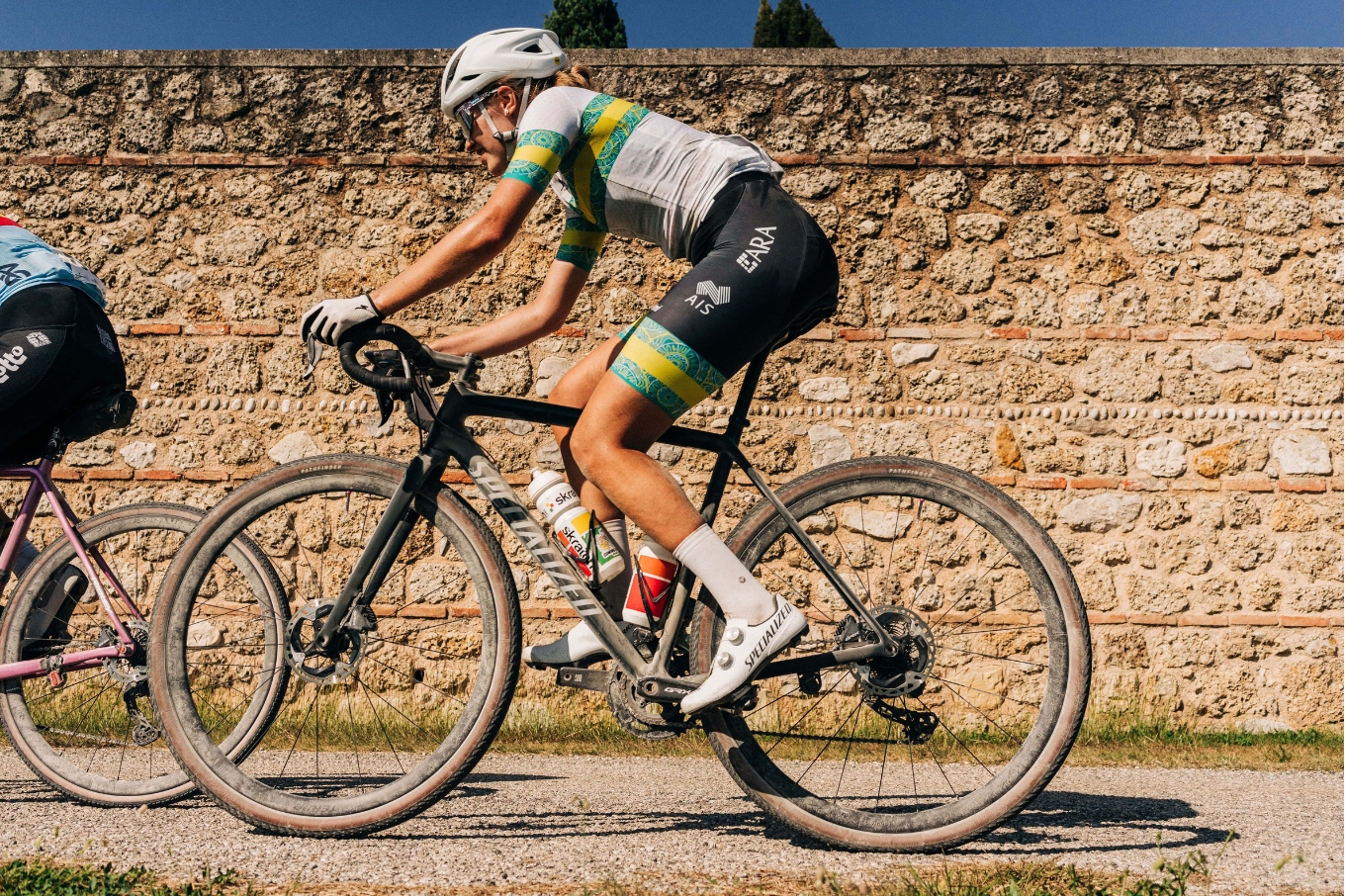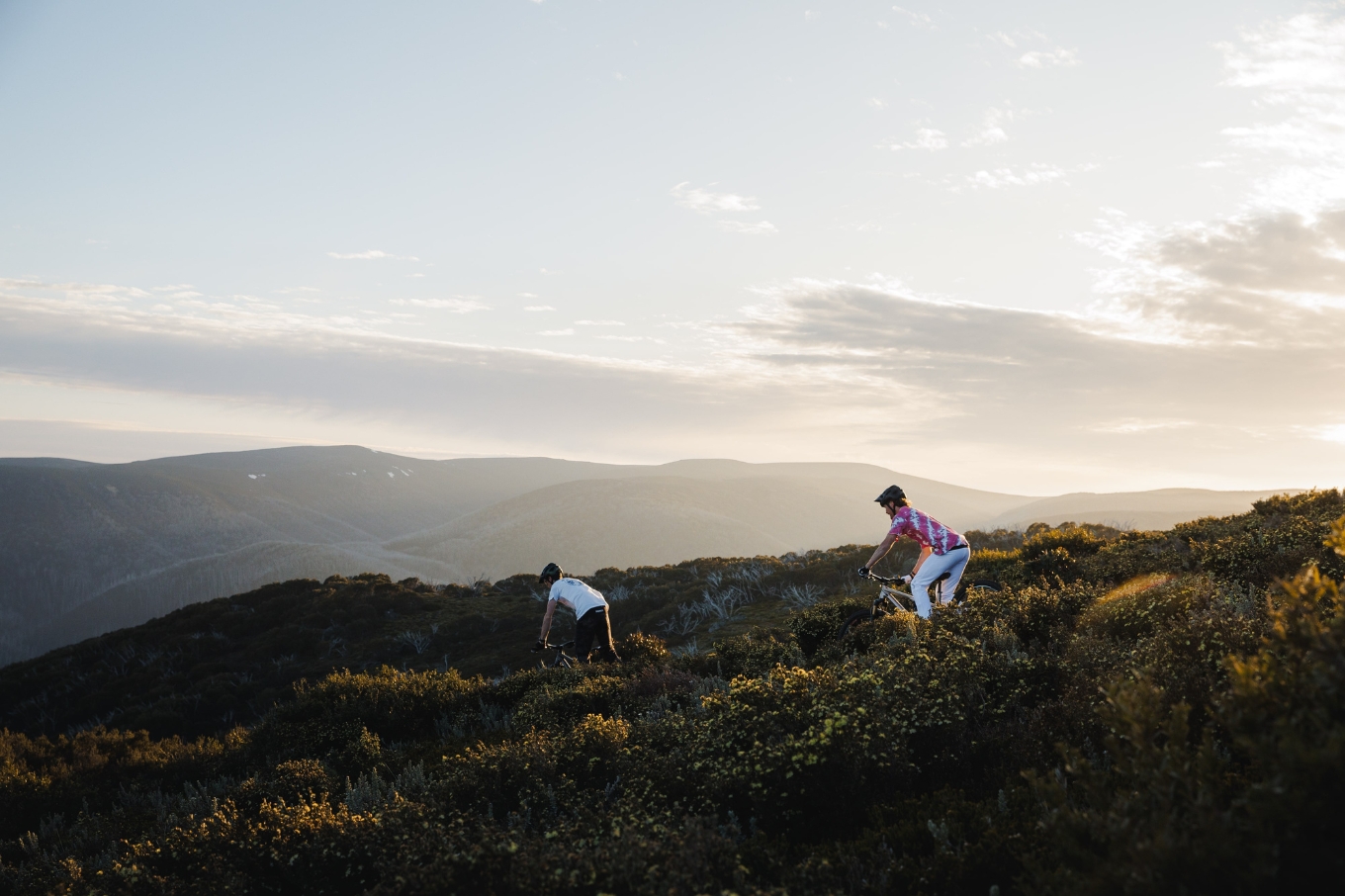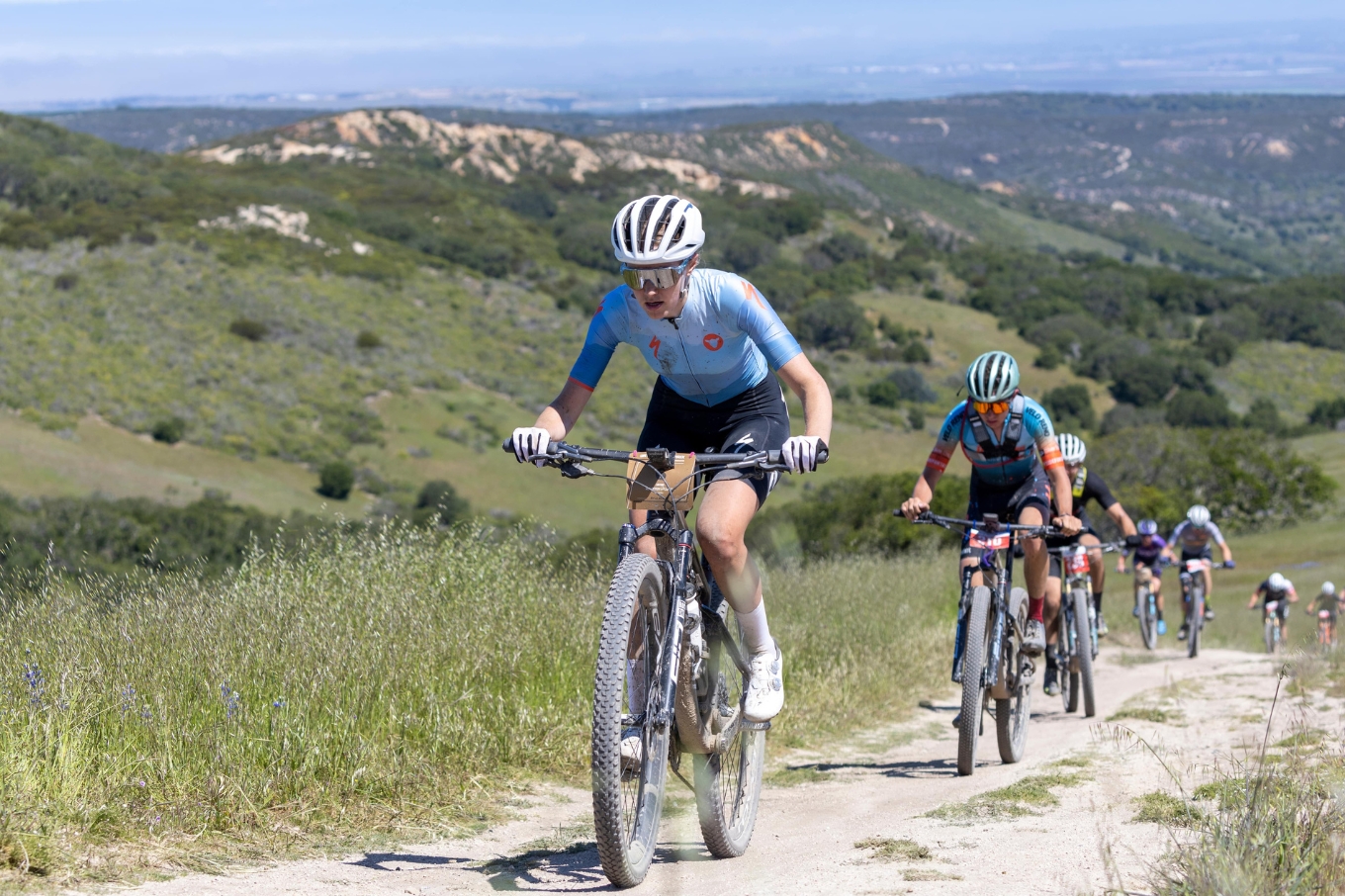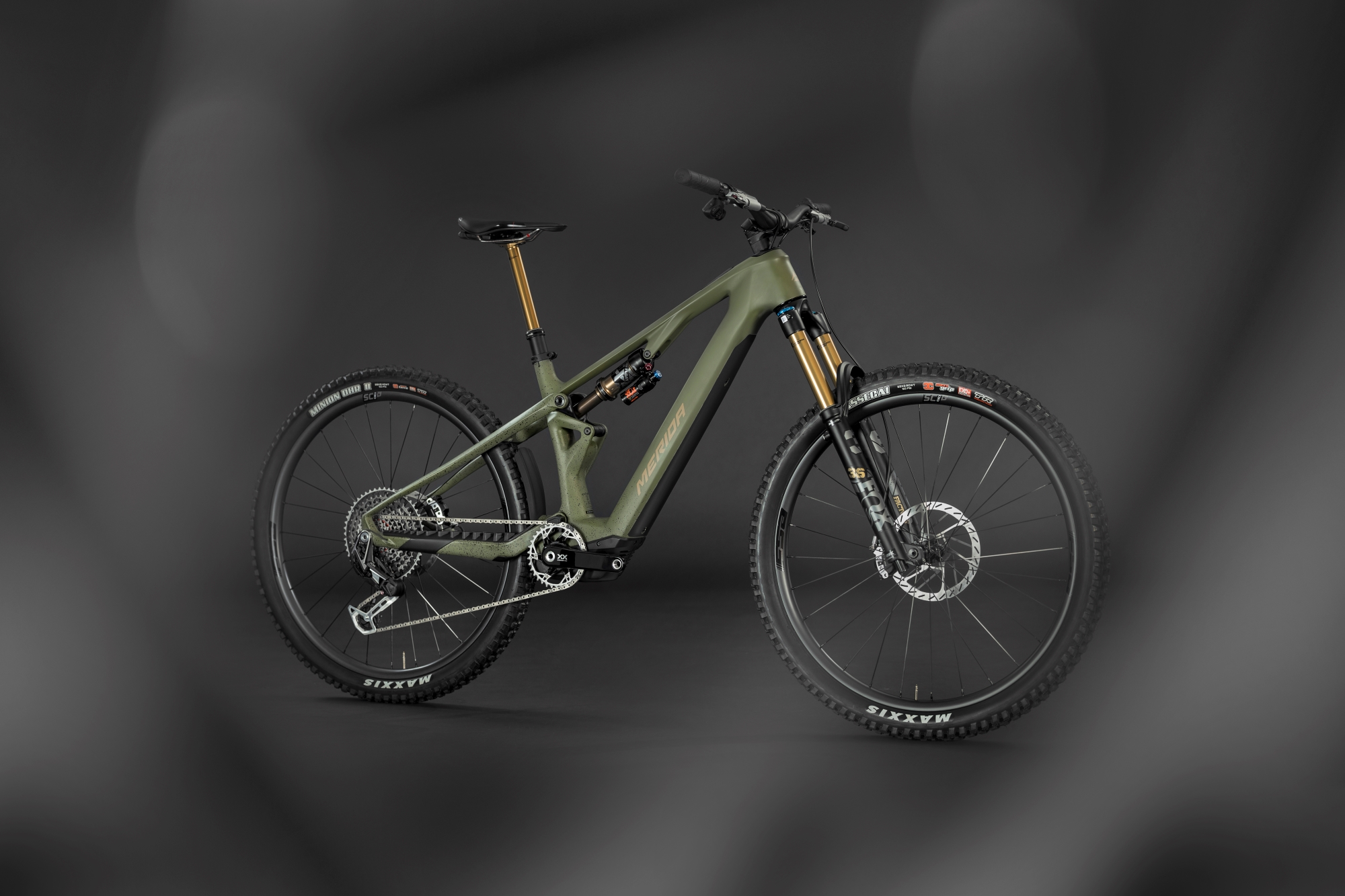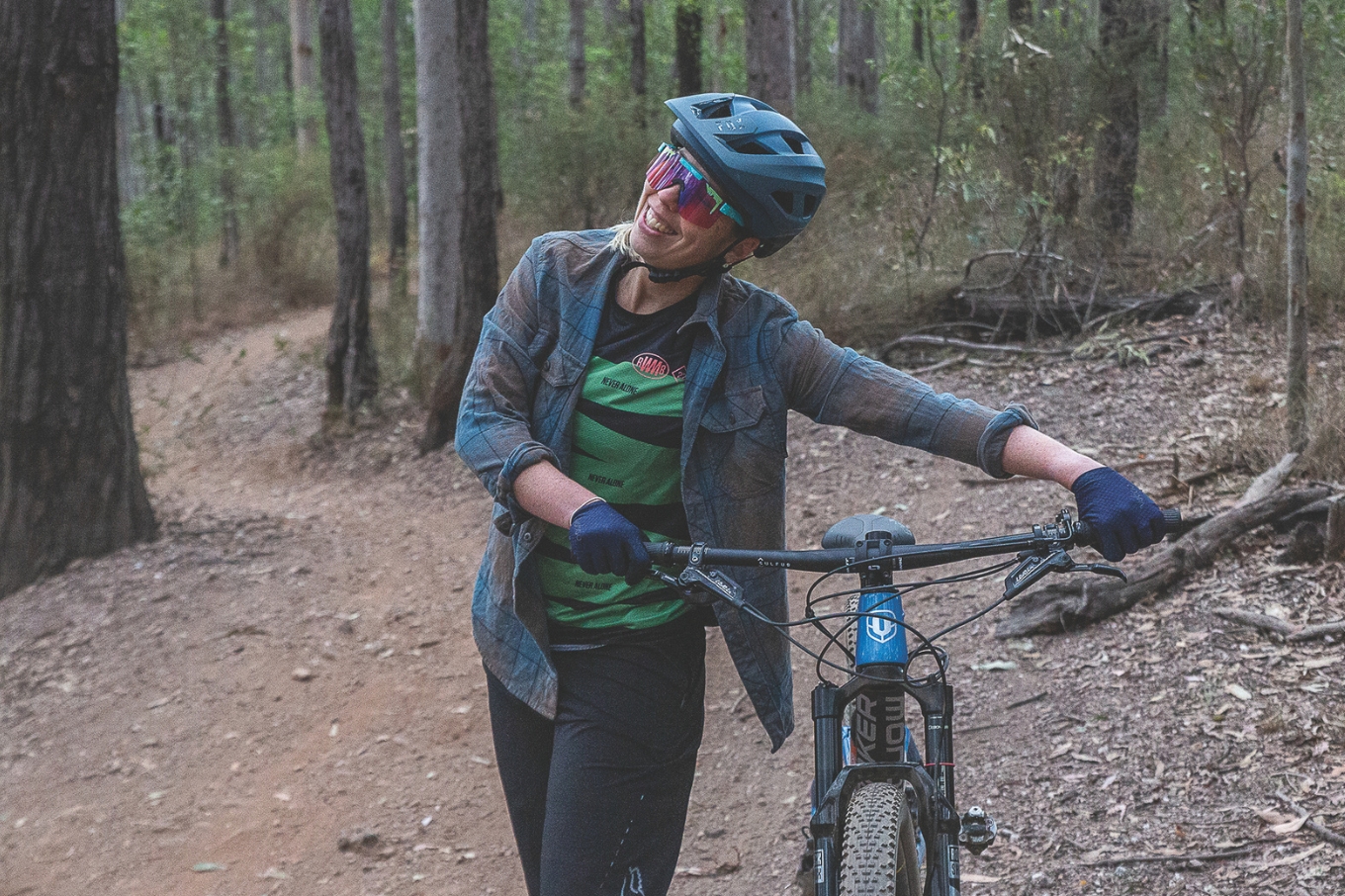Derby: the world's first mountain biking town
In only a few years, Derby has become a thriving mountain biking destination with some of the worlds best riding. We went to the Australian MTB Summit to find out what makes this place tick.
Words: Colin Levitch Photos: Nick Waygood, Colin Levitch
This week, the inaugural Australian Mountain Bike Summit took place in Derby. Now a thriving mountain bike town at the centre of a whole region that is becoming a mountain bike haven, Glen Jacobs recounted that it wasn't like this at all a few years ago.
When World Trail founder Glen Jacobs first arrived in Derby, it was a grim scene.
“It was a Tuesday afternoon; raining, overcast, foggy, and not a car on the road. The only person in the street was a guy holding a sheet of 6×4 ply — like a door — and banging (on) a window boarding up a shop."
"People were living here of course, but nothing was going on, and it (the town) was closed,” he recalls.
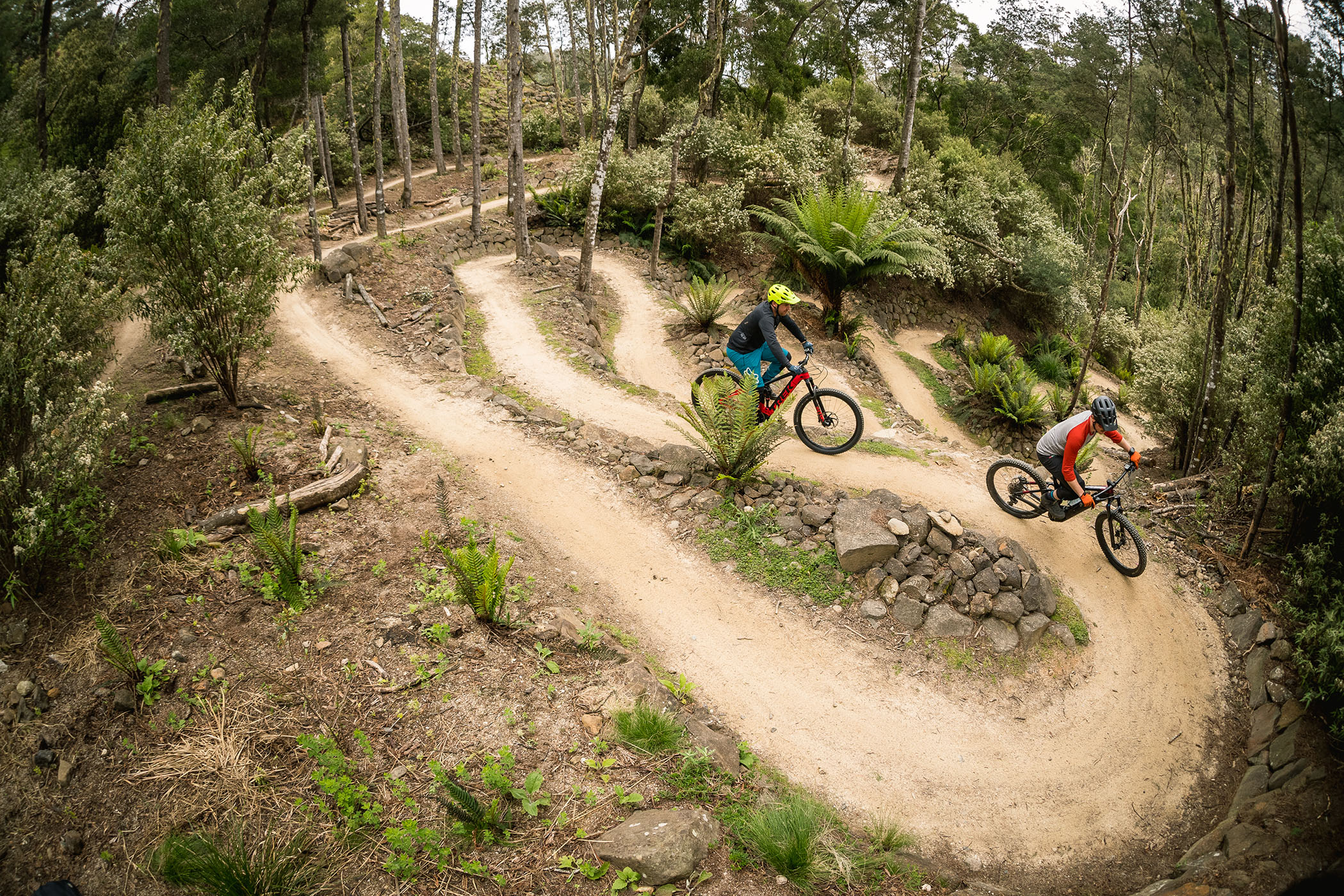
Derby is a mining town; tin brought settlers here with a boom in extraction, bringing jobs to this nook of Tasmania. As the story often goes, once all the valuable material had been pulled out of the ground, the mine closed, the jobs left and the town slowly faded. But, tin wasn’t the only valuable natural resource in the area; it just took the right set of eyes to realize the potential of this remote village in north-east Tasmania.
“We looked at the mountains, and we’d never seen anything like it, the boulders, the soil, the waterfalls, the lakes, the trees, and the coast just over the hill. We came here, and we’ve gone, ‘this place is going to be amazing,’” Jacobs says.
With a bit of vision and backing from the council, Derby has gone from a 21st-century ghost town to a freehub buzzing hidden gem in only four short years. Remember that the first stage of the trail network only opened in 2015. Since then trail network has more than doubled in size, Blue Derby has hosted a range of Australian events and has been thrust onto the world stage hosting two rounds of the Enduro World Series (EWS).
“From last year our trail counts are up 50 per cent, and from last summer on the previous summer; and what we’ve seen in October/November are suggesting the trail counts are up another 30-40 per cent again,” says Tim Watson, General Manager of Dorset Council.
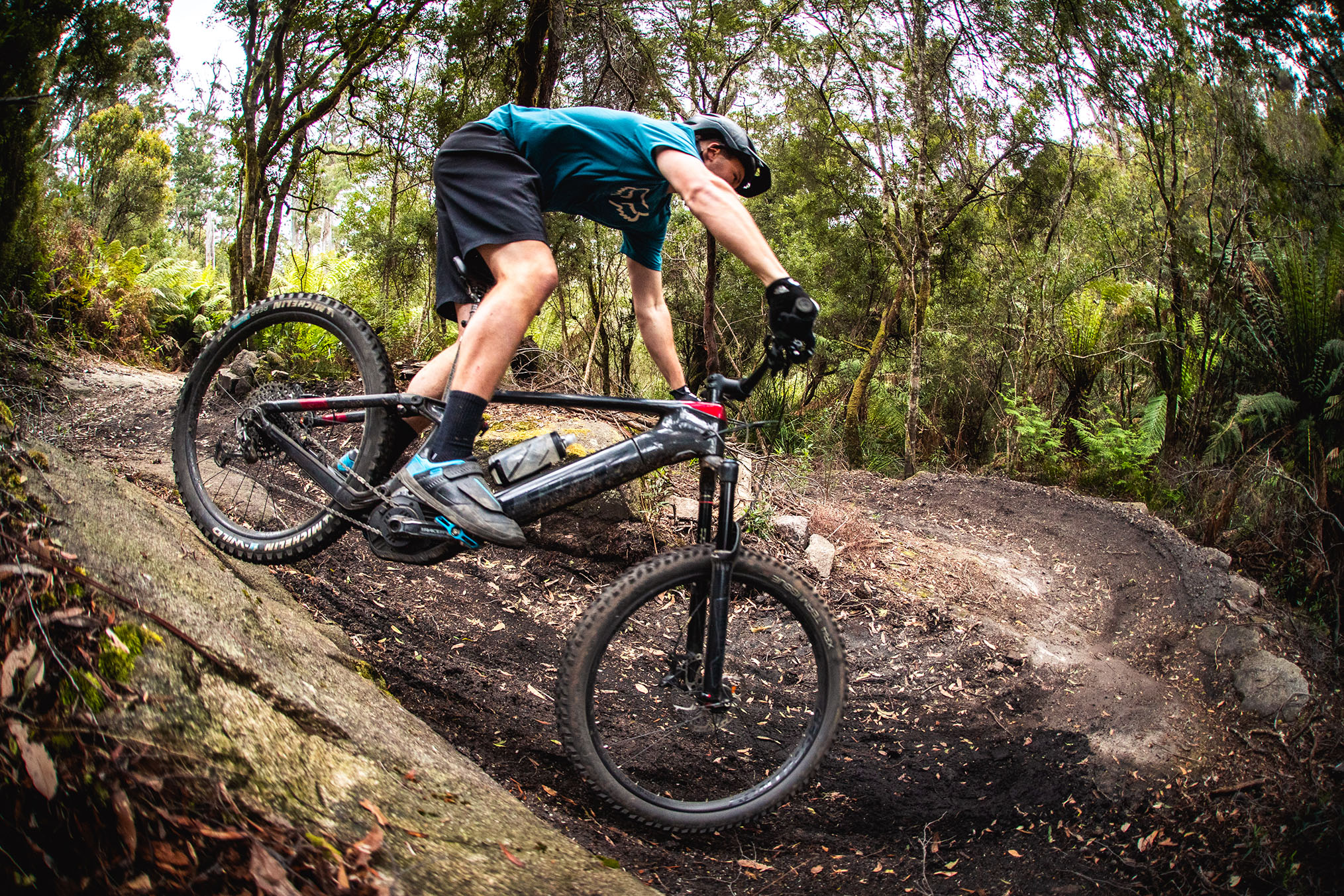
The secret sauce
According to Trail Forks, there are 125km of singletrack in the Blue Derby trail network; including the infamous EWS tech, like the granite crack on Detonate, the rock gardens on Shearpin, and the sendy and aptly named Air-Ya-Garn. But, you don't need a full-face helmet and a 180mm fork to enjoy this place. There is no shortage of flow trails where the difficulty is determined in part by how long you can resist reaching for the brakes.
Part of what makes this place ride the way it does is the dirt itself. The decomposed granite is grippy, and the bike feels like it glides over the trail surface as you snake through the forest, touring a progression of ecosystems along the way.
From town, taking Axe Head and rolling up to the iconic switchbacks of Rusty Crusty, past waterfalls and pristine rivers, it feels like you should be in one of the tour vehicles from Jurassic Park — minus the nearly getting eaten by a T-Rex part. As you work your way up higher in the trail network, the Snig Track climb takes you through a lush moss-covered forest some of the locals call 'the green room.' Then when you drop over the backside, you are greeted with rocky slabs, giant boulders and raw granite.
"One of the really special ingredients is the rocks. You just don't get those huge granite rock slabs; you can't fabricate those, they just have to be there," Watson says.
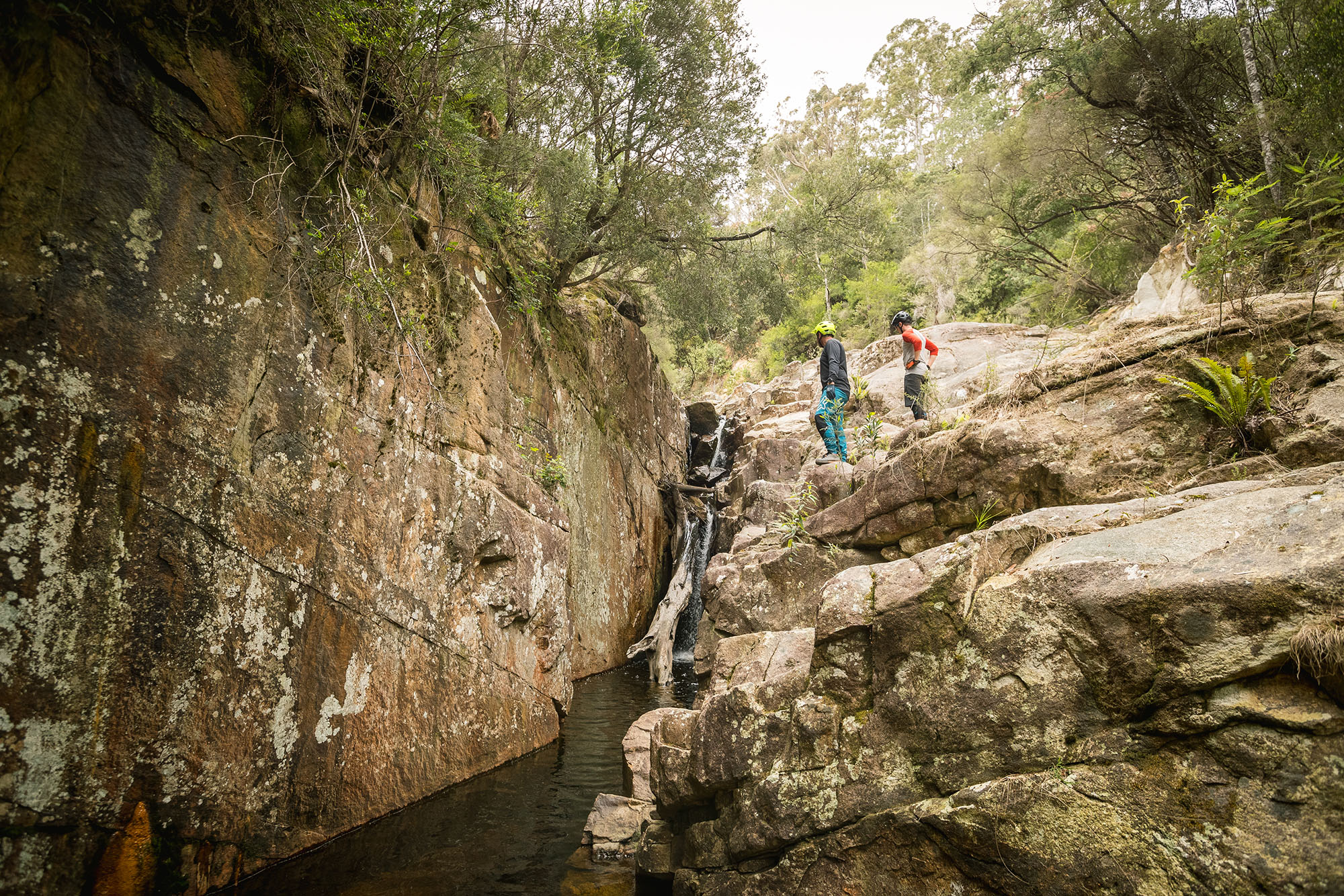
Hans Rey, a mountain biking pioneer who has been riding professionally for the better part of 40-years came here shortly after Blue Derby opened to the public, and has watched the trail network take shape.
“It's really good trails, and they are lucky with the terrain it’s perfect, not too gnarly. It has a lot of highlights; there's viewpoints and waterfalls, and then personally I think the ferns and the vegetation along the trail are amazing. In other places (around the world), you're riding barren hillsides, even in the Alps often you are above the tree line and it looks pretty barren and ugly. Compared to here, it literally looks like a landscaping job, but that's just the way it is naturally.”
Robert and Trish Buchan call both North Carolina and Whistler home, splitting their year between both locals. They first heard about Derby on a cruise to Antarctica, and have come to ride twice in the last six months.
“I’ve ridden a lot of different places, and Derby has the best trails I’ve ever ridden. They are the best built, best maintained, and just fantastic — it’s sacrilege because I live in Whistler,” laughs Robert.
“There is something for everyone here,” says Trish. “You can ride Blue Tier, and that’s a full day, or you can ride right from where you are staying to the trailhead. Everything you need is within biking distance.”
It’s not just about the trails
Both Watson and Jacobs attribute a large portion of the success of Derby to the quality of the trail, and the World Trail founder is extremely proud of what he and his crew built. But neither discount what has happened in the town to the success of Derby. After only four years, there are multiple shuttle companies, each offering a range of experiences beyond just a lift up the hill, two bike shops, high-end cafes and accommodation and even a brand new bakery.
“There was an old bloke that said, bah humbug and everything when we started on the trails, but he loves this place now because his family is staying here and they aren’t moving away. The old folks that also live up here, their kids are living here and they can find work here,” Jacobs says.
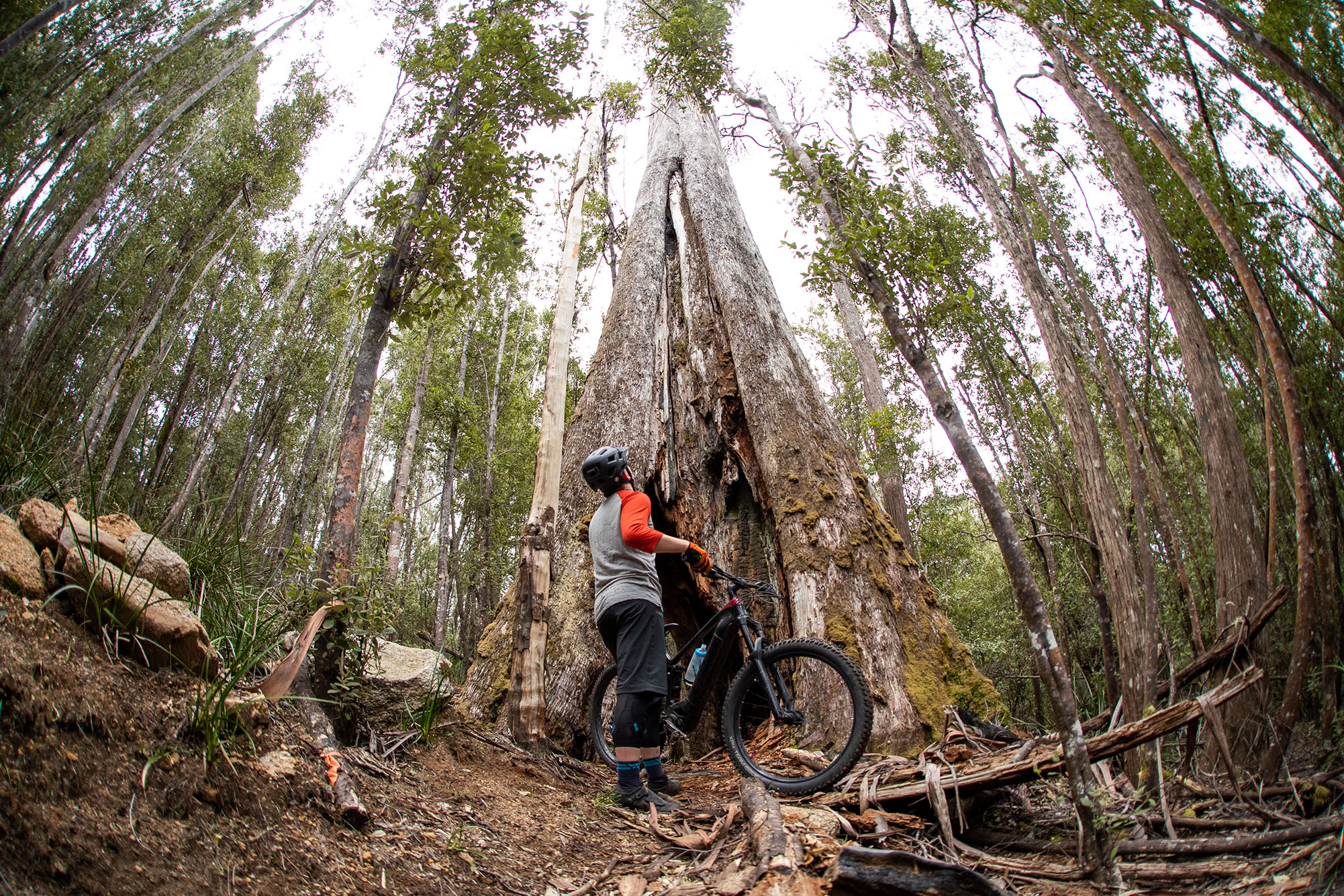
You hear a lot of comparisons between Derby and Whistler — we've even made one here. But one key factor separates Derby from Whistler, or Rotorua or any other mountain biking destination on the map
"The decisions about infrastructure have all been made around cycling," says Shimano Australia Brand Manager Toby Shingleton, who is soon to open new accommodation here in town called The River Cabins.
"Everyone's here for the same reason. It's like going to a good party where everyone is just there to have a good time. It not like being at a party where there is a sleazy guy trying to pick up, and there are a few hangers-on. Everyone going to the party is here to ride, and there's nowhere like that in the world."
Rey, whose career has taken him around the world echos a similar sentiment, "If you could ever call a place a true mountain biking town, it’s this (Derby). There was really nothing else going on, and now it's this.”
With the success of the Blue Derby Mountain Bike Trails other towns around Tasmania are taking note. Less than an hours drive to the coast, you have St. Helens. Already a tourist destination, the town is opening a new trail network, a feature of which is the Peak to Sea trail which allows riders to descend 44km from the top of Blue Tier all the way down to Swimcart Beach.
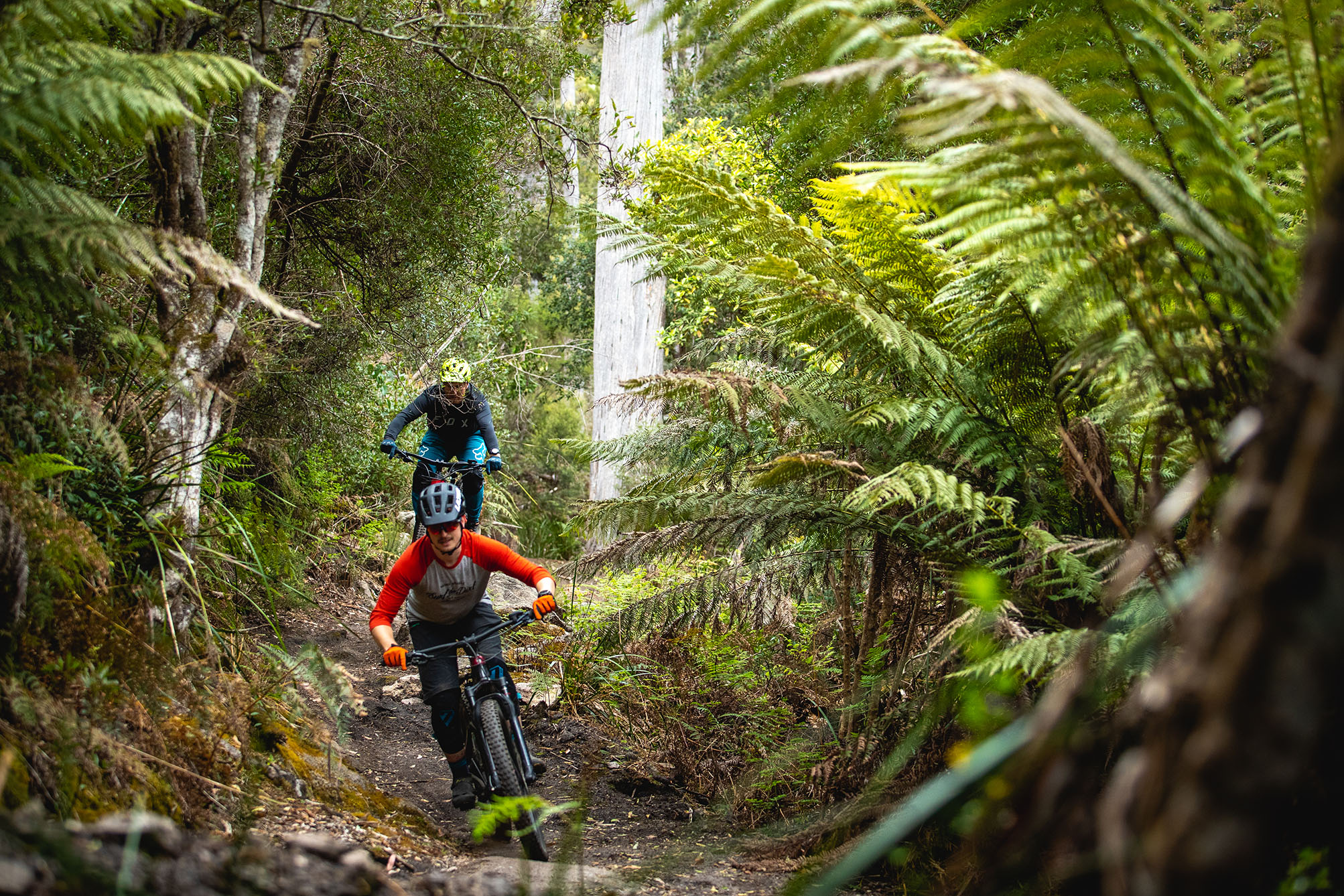
On the other side of Tassie, there is Maydena, a newly established gravity destination, and trail networks are popping up on the west coast of the island.
“There's just been a new trail opened a fortnight ago called Oonah Hill. That is the first in a series of planned tracks around the Queenstown region throughout the West Coast.” Tom Wotton, CEO of regional tourism organisaiotn West by North West, tells us.
Tasmania is often looked at as this remote and rugged far away land, and it can seem that way when you’re trying to get down there. The rugged beauty of the place is being showcased by clever trail builders using mountain bikes to breathe new life into the communities. For mountain bikers across the board, there seems to be an immediate connection to this place and the small island is quickly becoming one of the best places to ride mountain bikes.

